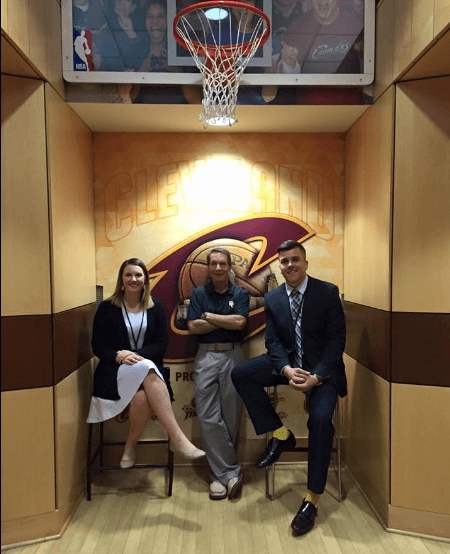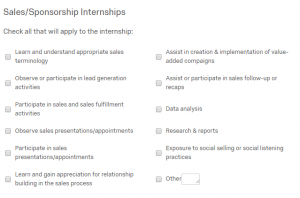Why do parents, teachers, politicians, managers and salespeople continue bad practices? Four reasons and the ways we express them are:
- We do what was done to us and assume it was best practice.
- “Look at me, I turned out OK didn’t I?”
- We lack the depth and breadth of relevant education to recognize bad practices.
- “See, you can succeed with any background!”
- We judge outcomes based on the exception rather than the rule.
- “Look at her, she started here and is now vice-president!”
- We lack the courage to meet the demands of reality.
- “I know this isn’t working, but I can’t change what I’m doing now.”
Sports sales recruiters often ask applicants, “Why do you want this job?” The wrong answer is, “I just love sports.” The irony is when it comes to pay, work hours and benefits, they literally bank on the applicant’s love for sports to compensate for, well, real compensation.
How Do We Know the Sports Sales Management Model is Broken?
Sales 101
First, consider some basic 101 principles of sales management. These quotes are directly from a leading sales textbook 1
- To attract and keep the best talent compensation must be uniform within the company and in line with what competitors’ salespeople receive.
- Salespeople who perceive the system as unfair may give up or leave.
- A constantly changing system may lead [salespeople] to constantly change their activities but never make any [more] money.
- Companies that do not emphasize service or do not anticipate long-term customer relationships typically rely heavily on commission plans.
- Salespeople working primarily on commission have little company loyalty and certainly are less willing to perform activities that do not directly lead to sales.
Inside sales reps in sports do not receive compensation in line with what they can get anywhere else. Top salespeople often see the system as unfair (given effort & reward) and leave as soon as a client sees how good they are (and offers multiples of current pay). Teams frequently “play with the lights” changing compensation systems in ways that rarely favor the rep by making the rep more money. The shift toward service-only reps leaves inside sales reps relying heavily upon commission and sacrificing customer welfare and service. As a result, few have loyalty and are certainly unwilling to do non-sales related activities.
Turnover
Second, consider the effects and costs of turnover. Average sales turnover across industries annually hovers around 25%. 2 Typical sports sales practice is to recruit a new class of inside salespeople every 4-6 months, suggesting something closer to the average turnover among car salespeople (~70-75%). 3 Some are promoted (internally or externally), but most leave the industry voluntarily or involuntarily.
Costs of turnover are estimated between $75,000 to $200,000 per salesperson4, taking into account recruiting, training, and lost sales. You can calculate yours here. The NBA estimates third-year reps generate 3.4 times the revenue as first-year reps. Unfortunately, relatively few get to the third year.
If I fail over half of my students each year, you wouldn’t say I’m a good teacher. In our program, we can’t blame the students. We recruited them. The same is true for teams. If annual turnover is anything much more than the non-sports corporate average (25%), at some point we must have the courage to start looking at the system and grasp the reality.
Training
Most sports sales managers are interested in training. The problem is the low proportion of these with any professional training in personnel management, compensation structure, leadership, and other sales management responsibilities. Many make great effort to learn to compensate for the lack of formal training (i.e., business management-related degrees). A few have had professional selling courses. A few have MBAs. Most were selected on the basis of being great salespeople, rather than management skills–which are two quite different things.
Sales students not taking the sports route are often hired by companies like Oracle, IBM and other major corporations who offer starting pay closer to $100,000 than $30,000, even while spending months in training before ever making a sale. We don’t expect teams to be on par with Oracle. But, $10-$20 an hour and first year commissions won’t attract the best talent among graduates who just spent tens or hundreds of thousands of dollars getting an education and accruing student loans.5
A New Model
Sales executives and managers (in sports) routinely bring in motivational sales speakers and hold weekly pep talks. Why? Because the nature of the role and associated benefits of the job aren’t intrinsically motivating on their own merits.
One of our partners, Spurs Sports & Entertainment, decided to do something about it with the support of leadership, including Frank Miceli and Tim Salier. Lindsay Beale, Director of Business Development at SS&E, walks us through the four steps they undertook.
Step 1: Look at the hard truth
We studied our sales work force and realized we were recruiting talent, investing resources into their professional training and development and they were leaving our organizations for other local corporations in sales roles. We thought we had the hiring and recruiting figured out. We found individuals who really wanted to sell. For years we felt our compensation was competitive to other sports organizations. This helped with recruiting, but when you hire talented salespeople, they have opportunities outside of the sports & entertainment business.
Corporations look for talented salespeople from reputable organizations. They use aggressive recruiters, signing bonuses, high base salaries and competitive compensation packages to attract them. We realized we couldn’t compete with them–specifically with our representatives with under 3 years of tenure.
We worked with finance and HR to evaluate our current sales structure to establish a plan to address our top concern of retention. Through our research it was also clear compensation wasn’t the only place sports sales are behind the corporate sales world. We are currently in the process of addressing sales retention by reviewing three areas: compensation, sales enablement and culture.
Step 2: Create competitive compensation
Teams may think their compensation is competitive with other teams, but that is the wrong comparison point if the goal is to retain talented salespeople. We restructured in four ways.
- Supplement commission in the first few years with a higher base salary to provide stability while the sales representatives build their books of business. [Among S3 partners moving in this direction, this ranges from $30,000 up to $42,000 for base pay.]
- Restructure commission to reward all sales revenue. We realized our commission structure heavily rewarded products that more tenured representatives were selling but weren’t incentivizing newer representatives.
- Provide a strong upside for top sales representatives, with clear rewards and recognition for high achievement.
- Hire sales representatives at a full time, full benefits position. No seasonal positions.
Step 3: Give them the tools
We established a Sales Enablement strategy applying digital tools, analytics and strategic processes to allow our sales team to excel in their jobs.
- Utilize data and analytics.
- Lead Scoring
- Appending data to sales leads to target individuals for specific campaigns
- Examples: Outer markets for weekend plans or high net worth individuals for premium events.
- Invest in technology to improve sales efficiency.
- Conversica, artificial intelligent sales assistant
- Zip Whip, texting platform
- ZoomInfo, business to business prospecting tool
- Linked-In Sales Navigator
- Train and develop adaptive selling skills.
- SS&EU: Classes are offered during work hours, are hands-on, and cover a variety of topics. They are facilitated live by in-house experts to encourage the cultivation of ideas and relationships across departments. SSEU is supported at the highest level of the organization and every executive teaches a different course.
- Internal and external sales trainers
- On the job sales training
Step 4: Create a people first culture. Really.
- Provide a clear path for internal promotions.
- Recognize each seller has an individual selling style. Coach, develop and set metrics to fit each representative.
- Promote work life balance for everyone.
- Eliminate the following phrases from management vocabulary:
- Grind.
- First one in, last one out.
- Outwork everyone else.
- Focus on quality of work and their commitment to the sales process, goals and team.
- Commitment (you want) vs. Compliance (you must)
- Eliminate the following phrases from management vocabulary:
- Allow flexible hours that still meet business needs.
- Increase self-empowerment. Encourage reps to make their own decisions on how to manage time and activities to reach goals rather than micromanage to the numbers.
- Coach reps to improve each day and strive for stretch goals they set for themselves.
Conclusion
We believe the S3 program can recruit more and better talent to the major the more teams buy into the new model aimed at development and retention. Just because teams can recruit people to fill each sales class with low wages and benefits doesn’t make it the right thing to do–either for the candidate or the team’s welfare. Basic sales management principles show us how we can do better.
Some teams are taking the lead. Since word has gotten out, others have reached out to say they are following suit. Do you want to join them? Are you in?
- Selling: Building Partnerships, 2014, Castleberry & Tanner, New York: McGraw-Hill. Quotes straight from the book are in italics. ↩
- https://www.ringdna.com/blog/work-to-retain-sales-reps. ↩
- https://www.wardsauto.com/dealer/maxdigital-out-stem-74-turnover-rate-among-dealer-salespeople. ↩
- Sales Management: Analysis & Decision Making, 2012 Ingram et al., London: Sharpe. ↩
- Even if it isn’t a private school (average ~$35k/year), public school still costs at least $10k/year for tuition/fees alone. ↩






